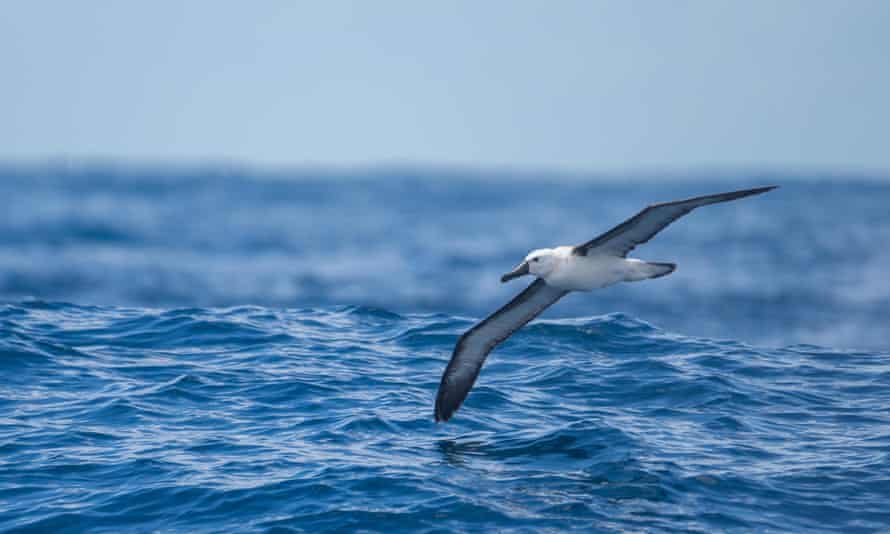Simple change to fishing gear saves thousands of birds in Namibia | Namibia
[ad_1]
A cheap and simple change to the equipment used by Namibian fishing boats is saving tens of thousands of vulnerable seabirds annually, researchers have estimated.
Some industrial fleets often use long lines fitted with thousands of baited hooks, which attract seabirds. In attempting to snatch away the bait, the birds can become tangled in the lines and die.
But by fitting pieces of red or yellow hosepipe, each a few metres long, to the lines towed behind boats, they have succeeded in scaring away the birds and preventing huge numbers of deaths, according to a study in the Biological Conservation journal.
More than 22,000 birds were estimated to have been accidentally killed by long-line fishing gear in 2009. But just 215 are thought to have died in 2018, despite boats using more hooks that year.
Among the many species to have benefited are white-chinned petrels, Atlantic yellow-nosed albatrosses and cape gannets, whose populations are all declining.

“In many other areas where I work where we lose threatened species, it would be unheard of to reduce mortality by 90% over a decade,” said co-author Steffen Oppel at the RSPB Centre for Conservation Science in Cambridge. He and his team used data from onboard surveys of Namibian shipping vessels to gauge the overall number of seabird deaths annually.
The waters off Namibia’s coast are rich in nutrients and support an abundance of marine life. For seabirds, it is a crucial feeding ground.
But, in the past, boats would sometimes collect boxes full of dead birds that had snagged themselves on fishing lines.
“The fact that we have done something about it … that gives me a great sense of joy and achievement,” said the report’s co-author, Titus Shaanika of BirdLife International’s Albatross Task Force in Namibia.
The use of bird-scaring devices on fishing lines became mandatory in Namibia in 2015.
Shaanika added that the local industry is generally supportive of methods to cut bird deaths, partly because of the relatively low cost. Installing hosepipe streamers on a long fishing line costs about N$4,000, or £200.
Besides the colourful hosepipe, which is prepared by a team of five women working at the port of Walvis Bay, conservationists have also promoted the use of weights attached to the baited hooks. These cause the hooks to sink to 10 metres or more below the surface – too deep for seabirds to reach when diving.
“I think it’s a real success story,” said Prof Ed Melvin at the University of Washington, who was not involved in the research but who has designed bird-scaring line systems.
Experiments going back decades show the effectiveness of such methods, he added, but it is rare to find a case study proving that they work on such a scale.
Because albatrosses do not begin to breed until later in life – and even then only sparingly – their populations are particularly sensitive to adult deaths, Melvin said. This was why efforts to protect them are so important.
Namibia’s trawler ships – which drag nets through the water to catch fish – have also switched to using streamers on their gear. The study found that the number of birds killed had fallen although the reduction was not as dramatic as for ships using long, baited lines.
The study authors suggest that this was likely down to the fact that some crews are reluctant to use bird-scaring lines in case they get tangled in their fishing gear.
Shaanika said his group was now working with trawlers to install equipment that would reduce the chance of this happening. “It just shows how much we can achieve if we work together and listen to each other,” he said.